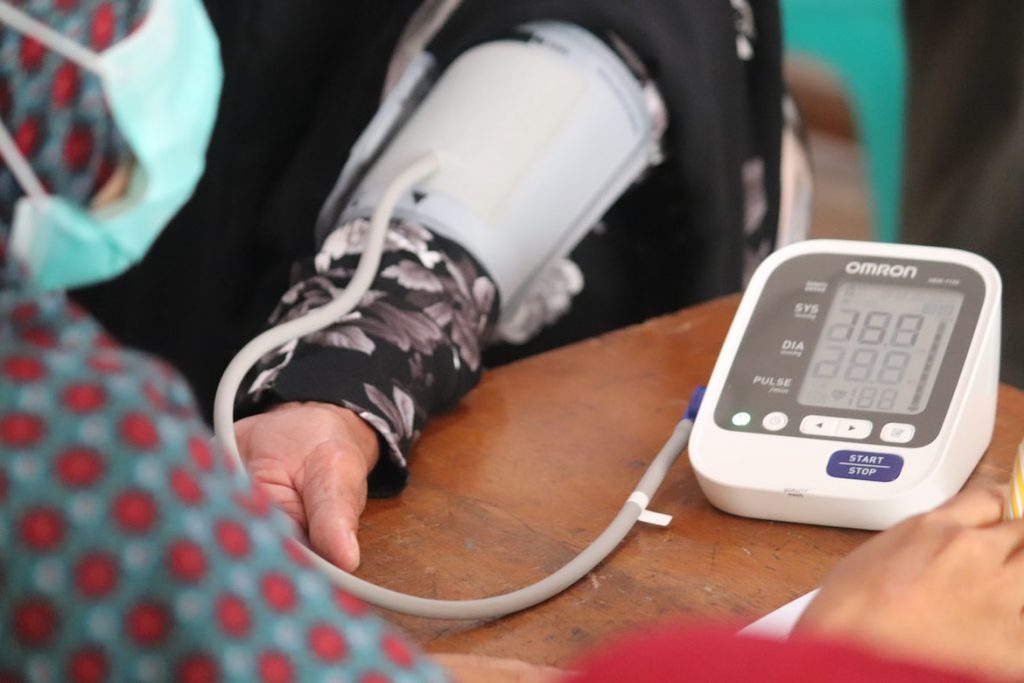Lifestyle changes to prevent and manage hypertension

Hypertension is an elevated blood pressure and it is one of the leading cause of death in the world.
It is most prevalent among adults and can lead to other conditions like congestive heart failure.
Blood pressure is the pressure exerted by the heart to pump blood round the body. It varies during the heart beat cycle and according to the person’s age, health and physical condition. It is measured as two figures; the systolic and diastolic blood pressure. A normal blood pressure is less than or equal to 120/80mmHg, and anything greater than 130/80mmHg is considered high.
Risk factors of hypertension
There are different factors that can increase your susceptibility to hypertension. These include:
- Advancing adult age: risk of having hypertension increases with age.
- Family history
- Overweight or obesity
- Poor diet habit
- Diabetes
- Chronic kidney diseases
- Sedentary lifestyle
- Stress
- Hypercholesterolemia: this refers to a high blood cholesterol level
Types of Hypertension
There are two types of hypertension based on the underlying factor:
- Primary hypertension
This is the type of hypertension which has no identifiable secondary cause. It is thought to be linked to genetics, poor diet, lack of exercise or obesity. Approximately 90% of adults with hypertension have this.
- Secondary hypertension
This is caused by an identifiable underlying condition. In other words, it is caused by another disease condition.
Common causes of secondary hypertension include:
– Chronic kidney disease
– Preeclampsia
– Renal artery stenosis
– Hyperparathyroidism
– Medication abuse (e.g NSAIDS) or substance abuse disorders (alcohol, cocaine) e.t.c.
Lifestyle changes to prevent and manage hypertension
It’s understandable that hypertension can be deadly. However, prevention is the best intervention, and a constant monitoring of your health is key to preventing complications.
Here are 7 tips to prevent and manage hypertension:
- Weight reduction
An ideal body weight is necessary in general well being. In contrast, overweight or obesity gives room to various diseases. In preventing and managing hypertension, you need to maintain a normal body weight with body mass index ranging 18.5 – 24.9kg/m2
Say you’re 55kg and 1.6 metres tall, your BMI is 20.8kg/m2. Then, you’re in a safe zone.
- Adopt the DASH eating plan
DASH is Dietary Approaches to Stop Hypertension. Just like the saying goes, “You’re what you eat”. Consume a diet rich in fruits, vegetables, and low fat dairy products with a reduced content of saturated fat.
- Physical activity/Exercise
Exercise is a drug-free approach to lowering blood pressure. A consistent exercise makes your heart stronger. A stronger heart can pump more blood with less effort. As a result, the force on your arteries decreases, lowering your blood pressure.
Try to get at least 90 – 150 minutes of moderate aerobic activities weekly. Any activity that increases your heart and breathing rate is an aerobic exercise and include active sports, dancing, swimming, jogging, e.t.c.
- Reduce alcohol consumption
Drinking a lot of alcohol increases your risk of developing hypertension, especially when you’re over the age of 35. It can narrow your blood vessels. When your blood vessels are narrower, the heart has to work harder to push blood around the body. This makes your blood pressure go up.
- Reduce salt intake
We all need salt for good health, but taking too much of it can increase blood pressure. The minimum daily requirement is around 1.25g – 2.5g (0.5-1g sodium) per day.
In preventing and managing hypertension, reducing you salt intake to less than 2g per day is optimal goal. You can do this by checking the amount on food labels and the quantity you add to food.
- Medications
It is as well very important to be regular in taking your medications while adhering to the right dosage and time recommended by your health provider.
- Increase potassium intake
Potassium-rich food are important in managing high blood pressure because it lessens the effect of sodium in the body. Preferred potassium intake is 3500 – 5000mg per day. Examples of potassium-rich foods are peas, mushroom, avocados, fat-free yoghurt, tomato and tomato juice, spinach, e.t.c.
The more potassium you consume, the more sodium you lose in urine. However, this needs to be discussed with your healthcare provider, in order not to go wrong with it.
I hope you found this article useful! Reach out to us at HubCare Health. Click the link below to download our App
References
Brunna and Suddhart textbook of Medical Surgical nursing
